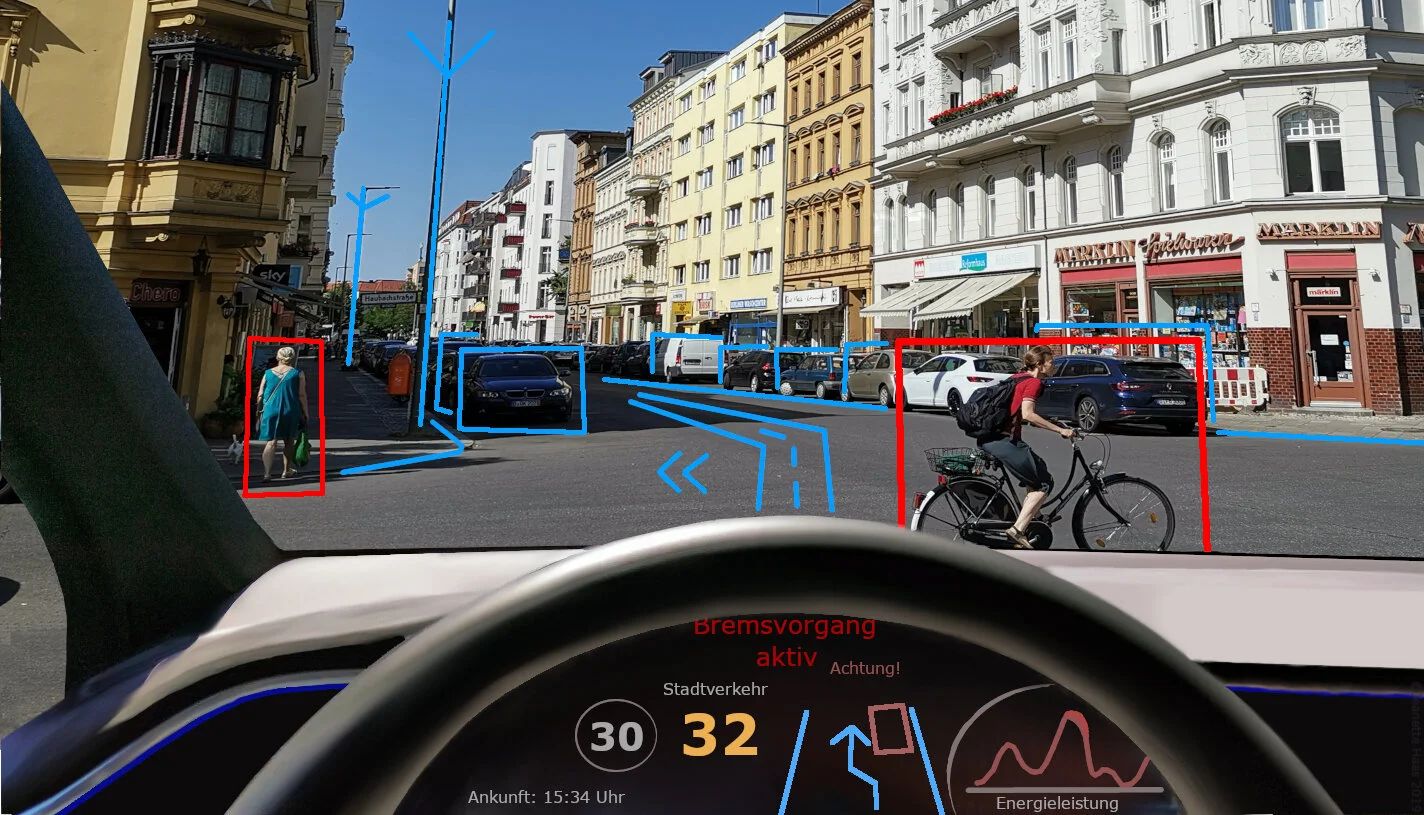
Pickup trucks are far more than mere conveyances; they are enduring symbols of durability, self-reliance, and rugged engineering that have woven themselves into the fabric of American industry and culture. For many owners, a truck isn’t just a tool for a job, but a long-term investment, a steadfast companion built to conquer decades of demanding tasks rather than just a few fleeting years. This inherent expectation of longevity, of a machine that starts strong and keeps hauling, towing, and working long past its expected prime, is what truly defines a workhorse.
Indeed, some trucks deliver precisely that promise: classic machines that, even today, still hum with purpose. Their beds might be scratched and dented, their frames coated with the patina of hard-earned experience, but they continue to move, haul, and perform the duties they were originally designed for. These are the true legends, the vehicles you still encounter on sprawling farms, bustling job sites, and winding back roads, living proof that genuine quality and deliberate over-engineering transcend the relentless march of time, refusing to age out of relevance.
In an automotive landscape increasingly dominated by complex tech and often disposable products, these iconic trucks stand as mechanical monuments to reliability and unwavering grit. They weren’t conceived to be flashy showroom pieces; their very essence was forged in the fires of necessity, built to endure. This in-depth article embarks on a journey to celebrate 10 such vintage utility trucks – the trailblazers and the titans – that absolutely secured their place as workhorse staples, offering an insightful look into their design, engineering philosophies, and the profound, lasting impact they’ve had on their respective eras and beyond.

1. **Ford F-Series (1948-1952)**When the Ford F-Series first rolled off the assembly lines in 1948, it wasn’t merely another truck; it was a revolution. This inaugural generation set an entirely new benchmark for light-duty trucks, introducing a blend of ruggedness and practical simplicity that resonated immediately with American workers. Prior to its arrival, trucks were often derivations of passenger cars; the F-Series, however, was designed from the ground up as a dedicated work machine, signaling a pivotal shift in automotive engineering and market focus.
The F1 model, in particular, quickly became synonymous with unyielding reliability. Its robust construction and straightforward mechanicals made it an instant favorite among those who depended on their vehicles day in and day out. Under the hood, the venerable flathead V8 engine provided the necessary power and torque, enabling the F-Series to confidently handle substantial loads and navigate challenging, rugged terrains. This combination of strength and simple, maintainable engineering ensured its widespread adoption.
The appeal of this first-generation F-Series extended across various sectors, making it a beloved choice for farmers tending their fields and small business owners managing their burgeoning enterprises. Its ability to perform demanding tasks without fuss cemented its reputation. Remarkably, the legacy of these early F-Series trucks endures, with many still operational today, faithfully serving as work vehicles for farm chores or cherished haulers for vintage transport tasks, a true testament to their original design integrity and inherent durability.
Car Model Information: 2024 Ford F-150 XLT
Name: Ford F-Series
Caption: 2022 Ford F-150 Lariat Luxury
Manufacturer: Ford Motor Company
Aka: Ford Lobo (Mexico, 1992–present)
Production: 1948–present
Class: Pickup truck#Full-size pickup truck
Layout: Front-engine, rear-wheel-drive layout,rear-wheel drive
Predecessor: 1941 Ford
Categories: All-wheel-drive vehicles, All Wikipedia articles written in American English, All articles that may contain original research, All articles with unsourced statements, Articles that may contain original research from September 2020
Summary: The Ford F-Series is a series of light-duty trucks marketed and manufactured by the Ford Motor Company since model year 1948 as a range of full-sized pickup trucks — positioned between Ford’s Ranger and Super Duty pickup trucks. Alongside the F-150 (introduced in 1975), the F-Series also includes the Super Duty series (introduced in 1999), which includes the heavier-duty F-250 through F-450 pickups, F-450/F-550 chassis cabs, and F-600/F-650/F-750 Class 6–8 commercial trucks.
Get more information about: Ford F-Series
Buying a high-performing used car >>>
Brand: Ford Model: F-Series
Price: $37,999 Mileage: 54,054 mi.
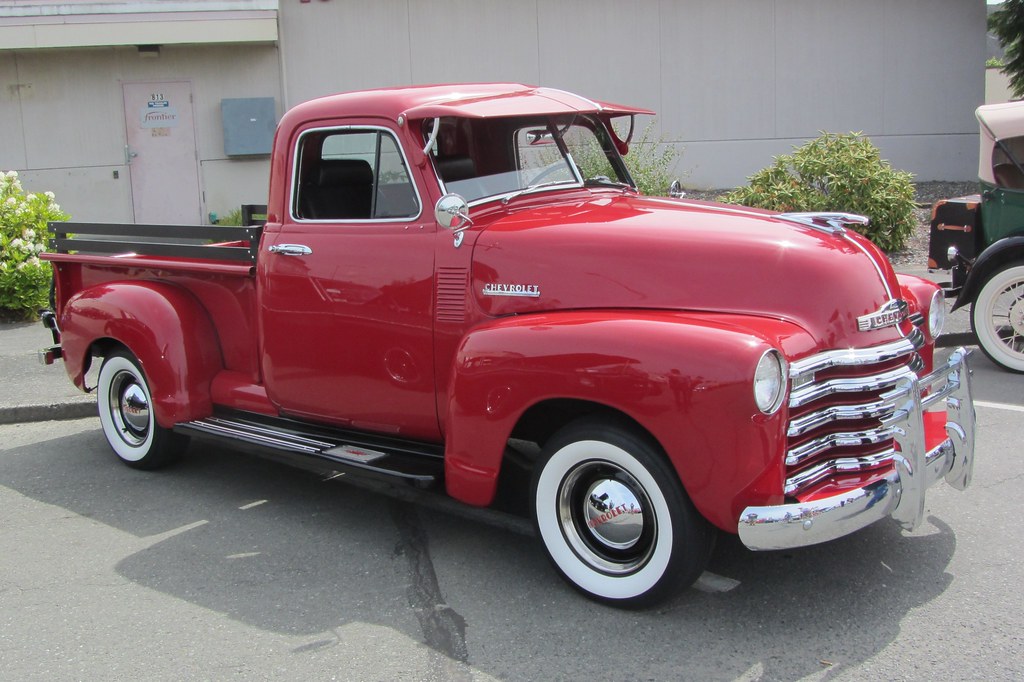
2. **Chevrolet Advance Design (1947-1955)**Following the exigencies of World War II, Chevrolet made a bold move with its Advance Design series, marking the brand’s first significant redesign of its truck line. This wasn’t just a cosmetic update; it was a comprehensive re-imagining aimed at delivering enhanced aesthetics paired with genuinely improved functionality. The trucks debuted with a fresh, more modern visual identity that captivated the public, signaling a new era for utility vehicles that didn’t sacrifice style for substance.
Among the various models, the 3100 half-ton variant emerged as a particular standout. It quickly garnered acclaim for its exceptional reliability and the remarkable ease with which it could be maintained. Chevrolet engineers meticulously crafted a vehicle that was not only robust enough for the rigors of daily work but also straightforward to service, a critical factor for owners in an era where self-sufficiency was highly valued. This blend of dependability and accessible repair made it an indispensable asset.
Today, the enduring appeal of the Advance Design series is palpable, evidenced by its continued popularity among automotive enthusiasts for restoration projects. More significantly, these trucks are still frequently observed in active working conditions, diligently performing tasks on farms and at construction sites. Their continued presence in such demanding environments speaks volumes about the foresight in their original design and the quality of their construction, cementing their status as true automotive icons.
Car Model Information: 2024 Mazda CX-5 2.5 S Carbon Edition
Caption: 1953 Chevrolet 6100 (Advanced Design)
Name: Chevrolet Advance-Design Series
Manufacturer: Chevrolet
Aka: ubl
Production: 1947–1955
Assembly: ubl
Class: Pickup truck
Platform: GM A platform
Related: Chevrolet Suburban#Fourth generation (1955)
BodyStyle: Pickup truck
Predecessor: Chevrolet AK Series
Successor: Chevrolet Task Force
Engine: ubl
Transmission: ubl
Wheelbase: ubl
Abbr: on (1953–1955)
Length: ubl
Weight: convert
Layout: FR layout
Categories: 1950s cars, Articles with short description, Cars introduced in 1947, Chevrolet trucks, Commons category link from Wikidata
Summary: The Advance-Design is a light and medium duty truck series by Chevrolet, their first major redesign after WWII. Its GMC counterpart was the GMC New Design. It was billed as a larger, stronger, and sleeker design in comparison to the earlier AK Series. First available on June 28, 1947, these trucks were sold with various minor changes over the years until March 25, 1955, when the Task Force Series trucks replaced the Advance-Design model.
The same basic design family was used for all of its trucks including the Suburban, panel trucks, canopy express, and cab overs. The cab overs used the same basic cab configuration and similar grille but used a shorter and taller hood and different fenders. The unique cab over fenders and hood required a custom cowl area which makes the cab over engine cabs and normal truck cabs incompatible with one another while all truck cabs of all weights interchange.
From 1947 until 1955, Chevrolet trucks were number one in sales in the United States, with rebranded versions sold at GMC locations.
While General Motors used this front end sheet metal, and to a slightly lesser extent the cab, on all of its trucks except for the cab overs, there are three main sizes of this truck: the half-, three-quarter-, and full-ton capacities in short and long wheelbase.
Get more information about: Chevrolet Advance Design
Buying a high-performing used car >>>
Brand: Chevrolet Model: Advance Design
Price: $25,958 Mileage: 26,006 mi.
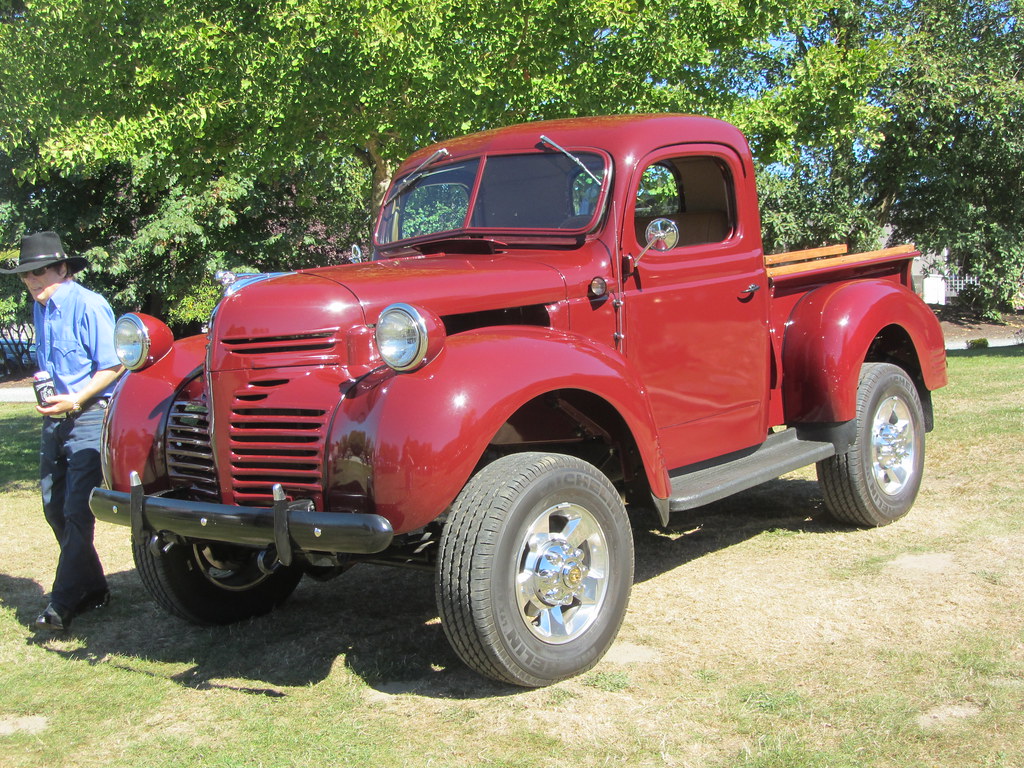
3. **Dodge Power Wagon (1945-1980)**The Dodge Power Wagon holds a singular place in automotive history as one of the very first civilian 4×4 trucks, a direct descendant of the formidable military WC series vehicles. Born out of wartime necessity, its design ethos was utterly uncompromising, prioritizing brute strength and unparalleled off-road capability above all else. This heritage endowed the Power Wagon with a legendary toughness that few, if any, civilian vehicles of its time could match.
Its formidable prowess meant the Power Wagon found itself deployed in an incredibly diverse array of demanding roles. From the arduous tasks of agriculture, where it hauled heavy equipment and navigated challenging terrain, to specialized military applications where its ruggedness was essential, this truck proved its mettle in every conceivable scenario. It wasn’t just a vehicle; it was a mobile solution for the toughest jobs, an embodiment of mechanical fortitude.
Even after decades, a significant number of vintage Power Wagons remain in active service, their enduring value a testament to their powerful performance and virtually indestructible durability. These trucks are cherished by collectors and utilitarian users alike, not just for their historical significance but for their continued ability to perform arduous tasks that would challenge many modern vehicles. The Power Wagon truly set the bar for heavy-duty, off-road utility, a standard that continues to resonate today.
Car Model Information: 2024 Mazda CX-5 2.5 S Carbon Edition
Manufacturer: Dodge
Layout: Front-engine, four-wheel-drive layout,four-wheel drive
Caption: 1954 Power Wagon
Production: 1945–1980, 2005–present
ModelYears: 1946–1980, 2005–present
Predecessor: Dodge WC series
Successor: Dodge Ram
Related: Legacy Classic Trucks,Legacy Classic Trucks
Class: Full-size,pickup truck
Wheelbase: 126 in
Abbr: on
Assembly: Warren, Michigan
Engine: {{Convert,230,cid,L,1,abbr=on,Chrysler flathead engine,Straight-six engine
Categories: 1950s cars, 1960s cars, 1970s cars, 1980s cars, All-wheel-drive vehicles
Summary: The Dodge Power Wagon is a four-wheel drive medium duty truck that was produced in various model series from 1945 to 1980 by Dodge. The Power Wagon name was revived for the 2005 model year as a four-wheel drive version of the Dodge Ram 2500. As a nameplate, “Power Wagon” continues as a special package of the four-wheel drive version of 3/4 ton Ram Trucks 2500 model.
The original civilian version, commonly called the “flat fender” Power Wagon (FFPW) or “Military Type”, was mechanically based on Dodge’s 3/4-ton WC series of World War II military trucks. The Power Wagon was the first 4×4 medium duty truck produced by a major manufacturer in a civilian version. It represents a significant predecessor to the many modern four-wheel drive trucks in use today. It was marketed as the WDX truck. The 230 cubic inch six cylinder engine in the first Power Wagons was known as the T137 – a name still used for the original series by enthusiasts. Following Chrysler Corporation policy of badge engineering to provide a greater number of sales outlets overseas, Power Wagons were also marketed around the world under the Fargo and De Soto badges.
Starting in the 1957 model year, factory four-wheel-drive versions of the Dodge C Series trucks were produced and sold as the W-100, W-200, W-300, and W-500, alongside the older Power Wagon. The pickups had the “Power Wagon” badge on the fender. The older design Power Wagon was marketed as the “Military Type” to distinguish it from the styled pickup versions. Later the “Military Type” was given the series number W-300M, and ultimately WM-300.
The heavy-duty four-wheel-drive W-300 and W-500 trucks were marketed as “Power Giants”. The four-wheel-drive version of the Dodge Town Wagon also got the “Power Wagon” badge.
The “Military Type” sales in the United States ended by 1968, because the vehicle did not comply with new federal light-duty truck regulations. The “Power Wagon” options continued on the Dodge D-Series through the 1980 model year. For the 1981 model year, “Power Ram” became the marketing name for four-wheel-drive Ram pickups, and aside from a 1999 concept vehicle, the “Power Wagon” name was not used until the 2004 revival.
Get more information about: Dodge Power Wagon
Buying a high-performing used car >>>
Brand: Dodge Model: Power Wagon
Price: $25,958 Mileage: 26,006 mi.
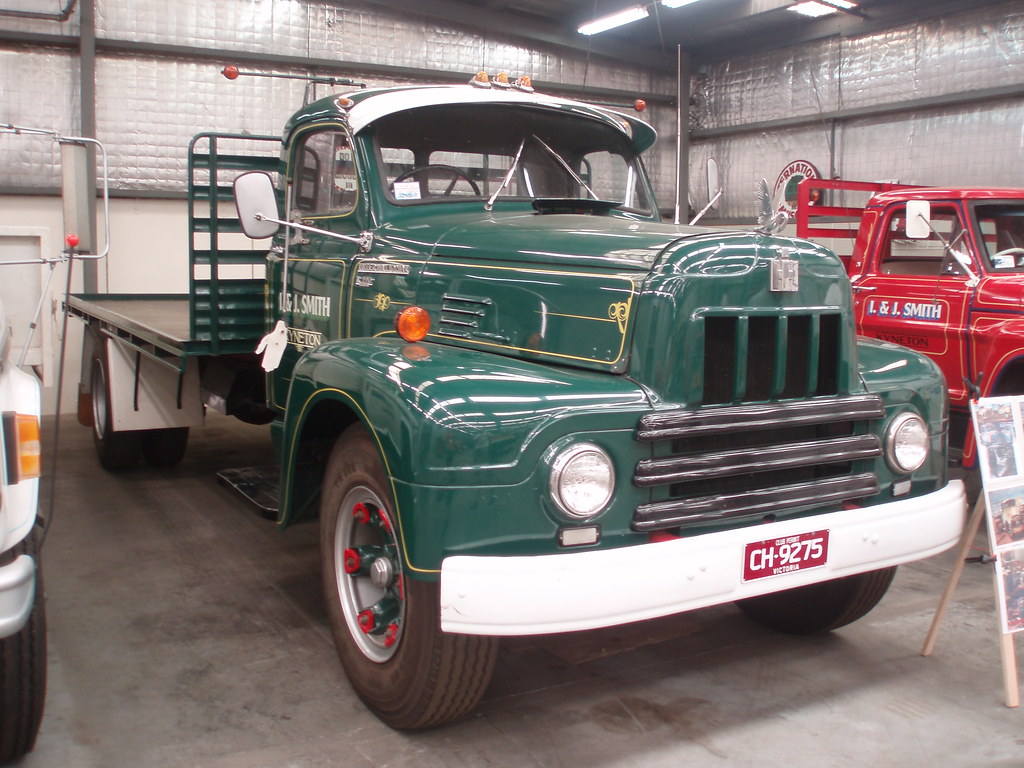
4. **International Harvester KB-Series (1947-1949)**The International Harvester KB-Series trucks, produced in the immediate post-war years, earned a sterling reputation for their inherently robust design and the sheer power of their engines. IH, a brand deeply rooted in agricultural and heavy-duty machinery, brought its extensive engineering expertise to bear on these trucks, crafting vehicles that were built to withstand unrelenting punishment and deliver consistent performance in the most demanding conditions. They were, in essence, purpose-built workhorses.
A hallmark of the KB-Series was its remarkable versatility. These trucks could be configured in numerous ways, adapting seamlessly to a wide spectrum of work requirements. Whether the task involved hauling substantial payloads across vast distances or providing immense towing capacity for heavy equipment, the KB-Series was designed to perform without compromise. This adaptability made them invaluable assets across diverse industries, from logging to construction.
To this day, the KB-Series retains a fervent following among vintage truck enthusiasts, who appreciate their no-nonsense engineering and unwavering capability. More importantly, these trucks haven’t merely become museum pieces; they continue to be actively employed in various agricultural and industrial settings. Their enduring presence in these demanding environments underscores the foresight of International Harvester’s design philosophy and the unparalleled durability embedded in every component, proving their timeless utility.
Car Model Information: 2024 Mazda CX-5 2.5 S Carbon Edition
Name: International K and KB series
Manufacturer: International Harvester
Predecessor: International D2
Class: pickup truck
Successor: International L series
Categories: 1940s cars, All articles with unsourced statements, Articles with short description, Articles with unsourced statements from October 2015, Commons category link is on Wikidata
Summary: The International K and KB series are trucks that were produced by International Harvester, the first being the K introduced in mid 1940. In total there were 42 models, 142 different wheelbase lengths and load ratings ranging from 1/2 ton to 90,000 lbs. They are best known for their durability, prewar design in a postwar era, and low price. The followup to the K, the KB, was introduced in 1947, with the characteristic difference being a widened lower grill appearing like “wings”. Between 1947 and 1949 122,000 KB-1 and KB-2 trucks were sold. The KB series was subsequently replaced by the L series.
Get more information about: International K and KB series
Buying a high-performing used car >>>
Brand: International Harvester Model: KB-Series
Price: $25,958 Mileage: 26,006 mi.

5. **GMC New Design (1947-1955)**GMC’s New Design trucks emerged onto the market concurrently with Chevrolet’s Advance Design series, sharing a foundation of many core components. However, GMC deliberately imbued its offerings with distinct styling cues and, often, more potent engine options, carving out a unique identity within the General Motors family. These trucks were meticulously engineered to uphold GMC’s reputation for dependable, heavy-duty performance, quickly becoming mainstays in commercial applications across the country.
A particular highlight of this era was GMC’s cab-over-engine (COE) models, affectionately christened “Cannonball.” These innovative designs were strikingly ahead of their time, offering superior visibility and maneuverability, characteristics that made them particularly adept at navigating tighter urban environments and congested work sites. The COE configuration wasn’t just practical; it lent these trucks a distinct and often celebrated aesthetic, making them genuine head-turners wherever they operated.
Indeed, these “Cannonball” trucks were more than just utilitarian tools; they were perceived as rolling works of art, transforming even the most mundane tasks into a stylish spectacle. Their unique silhouette and often bolder chrome accents set them apart. The blend of robust engineering, enhanced power options, and distinctive design ensured their widespread use and appreciation, marking the GMC New Design series as a significant chapter in the evolution of trucks that successfully married form with formidable function.
Car Model Information: 2024 Mazda CX-5 2.5 S Carbon Edition
Caption: 1953 Chevrolet 6100 (Advanced Design)
Name: Chevrolet Advance-Design Series
Manufacturer: Chevrolet
Aka: ubl
Production: 1947–1955
Assembly: ubl
Class: Pickup truck
Platform: GM A platform
Related: Chevrolet Suburban#Fourth generation (1955)
BodyStyle: Pickup truck
Predecessor: Chevrolet AK Series
Successor: Chevrolet Task Force
Engine: ubl
Transmission: ubl
Wheelbase: ubl
Abbr: on (1953–1955)
Length: ubl
Weight: convert
Layout: FR layout
Categories: 1950s cars, Articles with short description, Cars introduced in 1947, Chevrolet trucks, Commons category link from Wikidata
Summary: The Advance-Design is a light and medium duty truck series by Chevrolet, their first major redesign after WWII. Its GMC counterpart was the GMC New Design. It was billed as a larger, stronger, and sleeker design in comparison to the earlier AK Series. First available on June 28, 1947, these trucks were sold with various minor changes over the years until March 25, 1955, when the Task Force Series trucks replaced the Advance-Design model.
The same basic design family was used for all of its trucks including the Suburban, panel trucks, canopy express, and cab overs. The cab overs used the same basic cab configuration and similar grille but used a shorter and taller hood and different fenders. The unique cab over fenders and hood required a custom cowl area which makes the cab over engine cabs and normal truck cabs incompatible with one another while all truck cabs of all weights interchange.
From 1947 until 1955, Chevrolet trucks were number one in sales in the United States, with rebranded versions sold at GMC locations.
While General Motors used this front end sheet metal, and to a slightly lesser extent the cab, on all of its trucks except for the cab overs, there are three main sizes of this truck: the half-, three-quarter-, and full-ton capacities in short and long wheelbase.
Get more information about: Chevrolet Advance Design
Buying a high-performing used car >>>
Brand: GMC Model: New Design
Price: $25,958 Mileage: 26,006 mi.
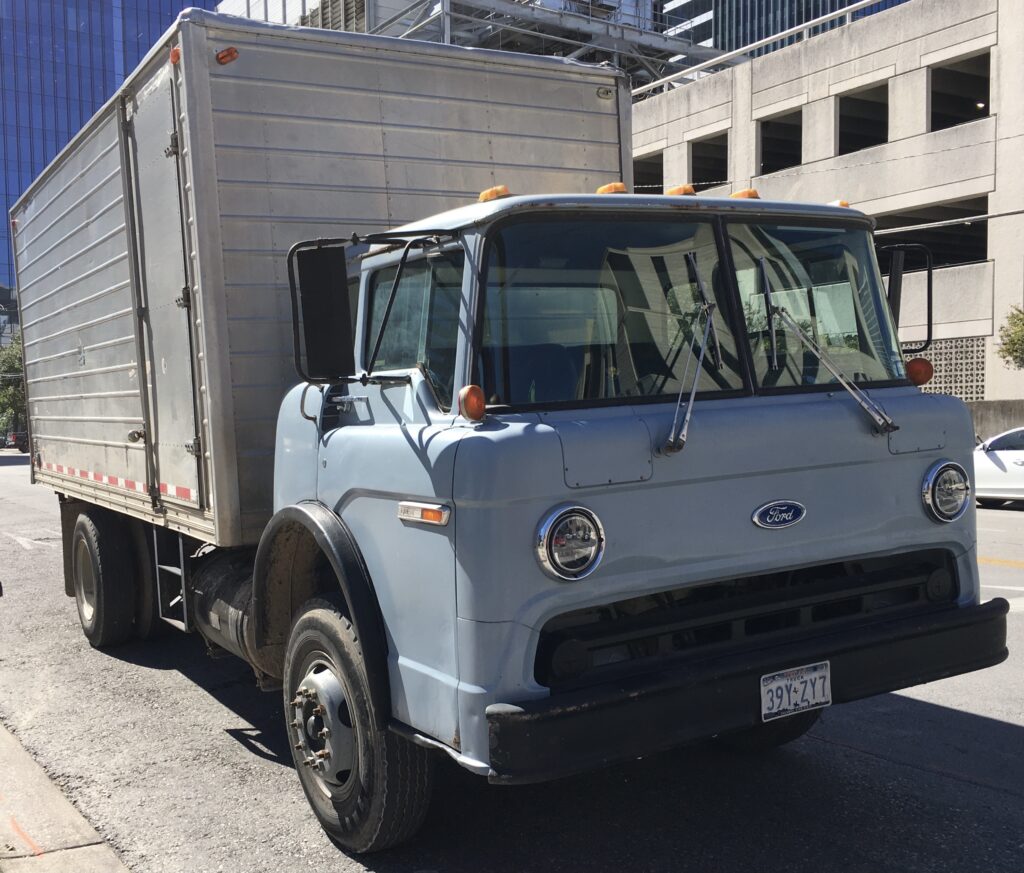
6. **Ford C-Series (1957-1990)**The Ford C-Series stands as an undeniable stalwart of American highways, maintaining an incredible production run from 1957 all the way to 1990. This enduring line of medium-duty trucks carved out an indispensable role across an astonishing variety of industries, becoming a familiar sight from delivery services crisscrossing urban centers to vital fire departments responding to emergencies. Its sheer ubiquity and sustained presence speak volumes about its fundamental soundness and utility.
At the core of the C-Series’ success was its innovative cab-over-engine (COE) design. This configuration provided several distinct advantages, most notably delivering excellent visibility for drivers and significantly enhancing maneuverability. These characteristics were crucial for trucks operating in tight spaces, crowded city streets, or demanding industrial environments where precision was paramount. The COE layout allowed for a more compact overall footprint without sacrificing cargo capacity.
Whether the task at hand involved hauling agricultural goods like hay or projecting a sleek, professional image for a commercial fleet, the Ford C-Series proved its unwavering capability. The enduring presence of these trucks powerfully illustrates the axiom that old trucks never truly die; rather, they evolve into legends. Many C-Series trucks continue to operate in the modern era, faithfully serving in rural and urban delivery roles, a testament to their robust construction and timeless design that allowed them to adapt and persist for decades.
Car Model Information: 2025 Ford F-150 RAPTOR
Name: Ford C series
Manufacturer: Ford Motor Company
Aka: Mercury M series (Canada)
Production: 1957–1990
Assembly: Louisville Assembly Plant,Kentucky Truck Assembly
Predecessor: Ford F-Series second generation
Successor: Ford Cargo
Class: Medium-duty truck
BodyStyle: Cab over
Engine: Gasoline,Diesel
Transmission: Manual,Automatic
Related: Ford H-Series (1961–1966),Mack Model N (1958–1962)
Sp: us
Categories: All articles needing additional references, Articles needing additional references from April 2022, Articles with short description, Cab over vehicles, Class 5 trucks
Summary: The Ford C series is a range of trucks that was produced by Ford between 1957 and 1990. The first cab over engine (COE) truck produced with a tilting cab by Ford, the C series replaced the C-series COE variant of the F-Series, produced since 1948. Produced as both a straight/rigid truck and a tractor, many versions of the C series were produced, ranging from Class 5 to Class 8 GVWRs. The C-series was also used as a basis for fire apparatus production.
Produced for 33 years nearly unchanged (with the exception of its powertrain), the C series was the longest-produced commercial truck in North America at the time of its withdrawal; only the Mack Model R (39 years) and Kenworth W900 (65 years) have remained in production longer. In 1986, Ford began phasing in the Ford Cargo in North America, serving as its replacement after the 1990 model year.
Get more information about: Ford C series
Buying a high-performing used car >>>
Brand: Ford Model: C-Series
Price: $132,995 Mileage: 7,251 mi.
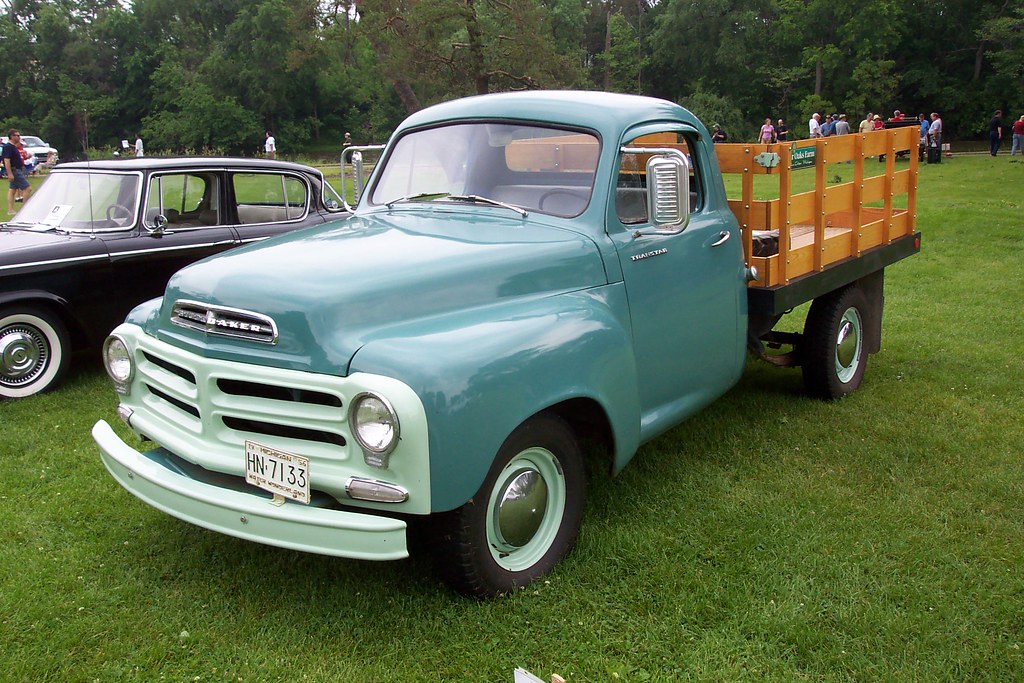
7. **Studebaker Transtar (1956-1963)**The Studebaker Transtar series introduced a distinctly unique blend of style and surprisingly advanced engineering to the competitive truck market of its era. As a smaller player among the giants, Studebaker consistently sought to differentiate its offerings, and the Transtar was a prime example of this philosophy. It presented a refreshed aesthetic combined with thoughtful mechanical innovations, aiming to deliver both rugged capability and a more refined driving experience for its operators.
Beneath its distinctive sheet metal, the Transtar offered a versatile range of powerplants, from a modest but reliable 6-cylinder engine suitable for everyday tasks to a V8 powerhouse. The latter was famously described as capable of outrunning “a startled jackrabbit,” suggesting a surprising turn of speed for a work truck. These engines were meticulously engineered to handle tough jobs, yet they were paired with chassis designs that prioritized a smoother ride and offered amenities that were considered quite modern for the period, elevating the driving experience beyond mere utility.
The durability and unique, often elegant, design of the Transtar have ensured that many of its products have remained in active use for decades. It stands as a testament to Studebaker’s commitment to quality and distinctiveness, a vintage charmer that steadfastly refuses to fade into obsolescence. The Transtar remains a beloved classic, not just for its historical significance but for its enduring ability to perform, embodying a blend of ruggedness and understated style that continues to captivate enthusiasts.
Having explored the foundational legends that pioneered the concept of the tireless workhorse, our journey into automotive history continues, shining a spotlight on the remaining seven iconic utility trucks that further cemented their legacies. These machines didn’t just meet the demands of their eras; they actively shaped them, introducing innovations and demonstrating an enduring appeal that transcends generations. We delve now into their unique stories, celebrating their unwavering utility and remarkable off-road prowess that continue to resonate with enthusiasts and professionals alike.
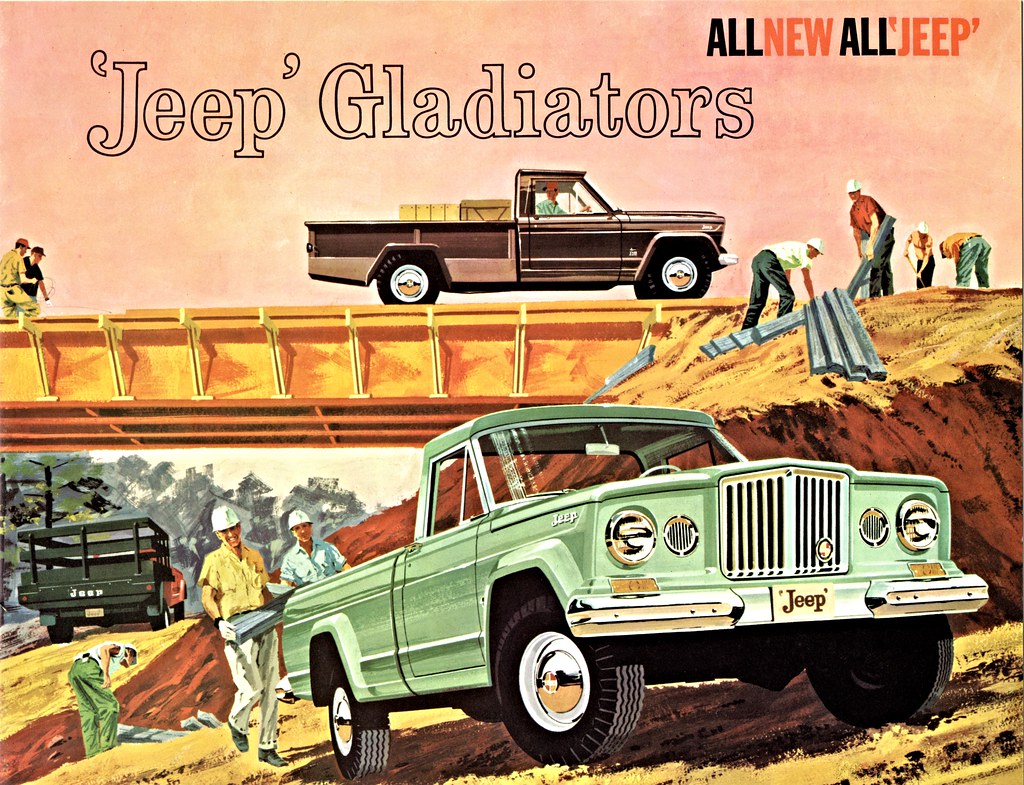
8. **Jeep Gladiator (1962-1988)**This beast on wheels, also known by its J-Series designation, masterfully combined Jeep’s legendary off-road capabilities with the undeniable practicality of a pickup truck. It emerged as a compelling choice for those who demanded more than just pavement performance, bridging the gap between rugged adventure and everyday utility with remarkable finesse. The Gladiator wasn’t merely a vehicle for a specific task; it was a versatile platform ready for anything.
Its popularity soared among off-road enthusiasts who yearned for a robust vehicle capable of conquering untamed trails, while also serving as a supremely reliable work truck in the most rugged conditions imaginable. Whether traversing rocky landscapes or navigating challenging construction sites, the Gladiator consistently proved its mettle, showcasing a resilience that few contemporaries could match. Its design inherently spoke of purposeful engineering, ready to face any challenge head-on.
The Gladiator’s boxy, no-nonsense frame famously “screamed, ‘I mean business’,” projecting an image of unwavering strength and steadfast determination. Yet, beneath that formidable exterior, its reliable engine quietly “whispered, ‘But I’ll still get you there in style’,” hinting at an underlying refinement and dependability. This unique blend of overt ruggedness and covert elegance made it instantly appealing, distinguishing it in a crowded market.
Ultimately, whether it was diligently hauling hay across sprawling fields or confidently cruising down Main Street, the Jeep Gladiator transcended its role as a mere truck. It became a powerful symbol of American grit and ingenuity, a testament to the idea that sometimes, embracing a straightforward, square design is precisely what makes a vehicle enduringly cool. Its legacy is one of uncompromising utility wrapped in an iconic, unmistakable silhouette.
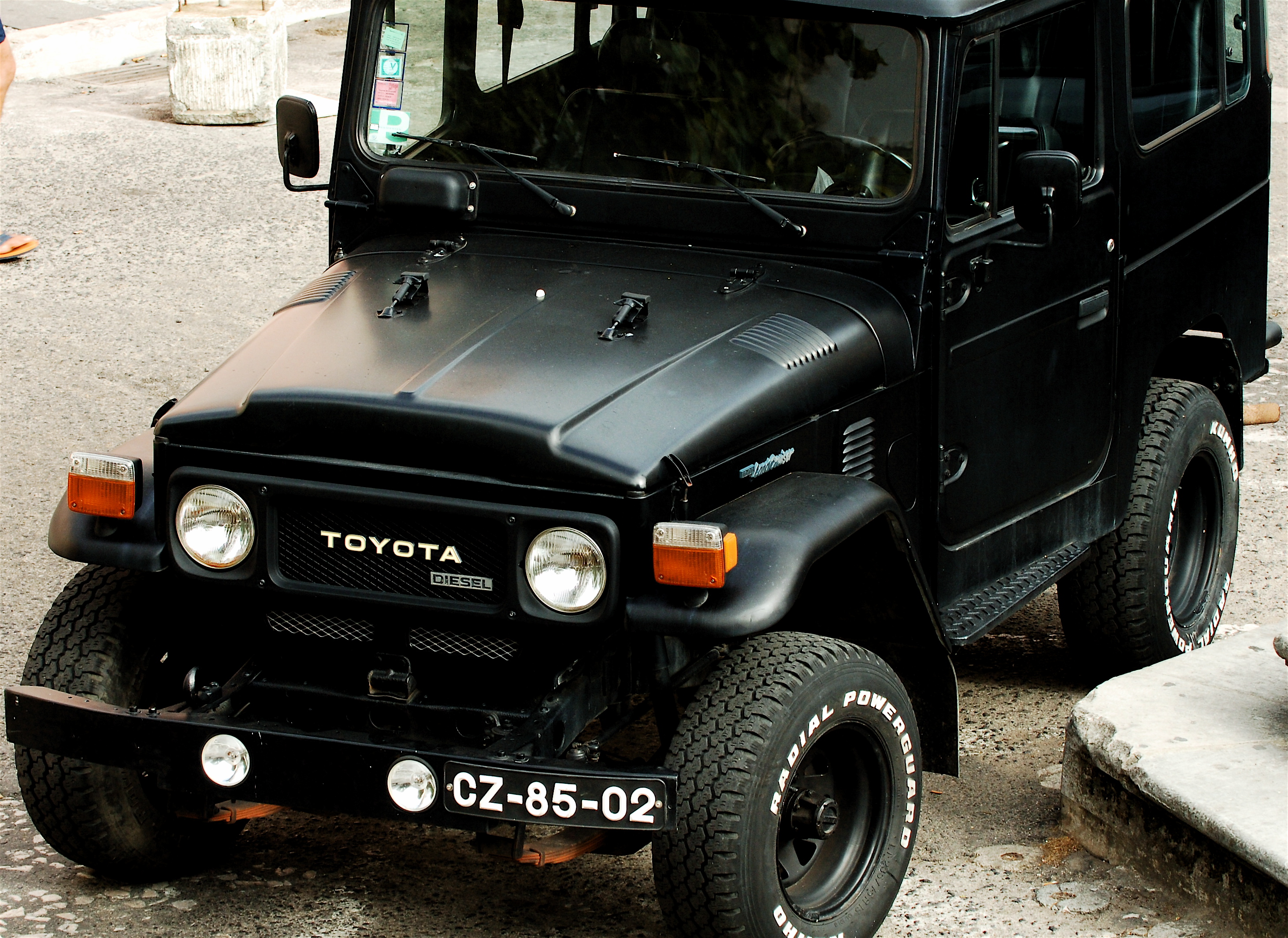
9. **Toyota Land Cruiser (J40) (1960-1984)**Emerging from the vibrant backdrop of the swinging 1960s, the Toyota Land Cruiser J40 series was more than just a truck; it was an uncompromising force, famously described as “more challenging than a pet rock in a hailstorm.” This wasn’t merely hyperbole; it was a testament to its incredible robustness and an almost defiant ability to shrug off the harshest conditions Mother Nature could throw at it.
Its distinctive, purposeful design quite literally “screamed, ‘I laugh in the face of rough terrain’,” an audacious declaration of its supreme off-road prowess. The J40 conquered landscapes with the authority of a seasoned explorer, whether tackling desolate deserts, dense jungles, or formidable mountain passes. Originally conceived for arduous military applications, its inherent toughness and reliability quickly caught the attention of civilian markets, where its popularity rapidly proliferated across the globe.
Even after decades of hard-earned service, a remarkable number of J40 Land Cruisers continue to diligently operate today, a vivid embodiment of design integrity and manufacturing excellence. Its unmistakable style, which has steadfastly “never gone out of fashion,” proves a profound truth in the automotive world: some things genuinely “get better with age.” The J40 isn’t just a survivor; it’s an icon whose utility and appeal deepen with every passing year.
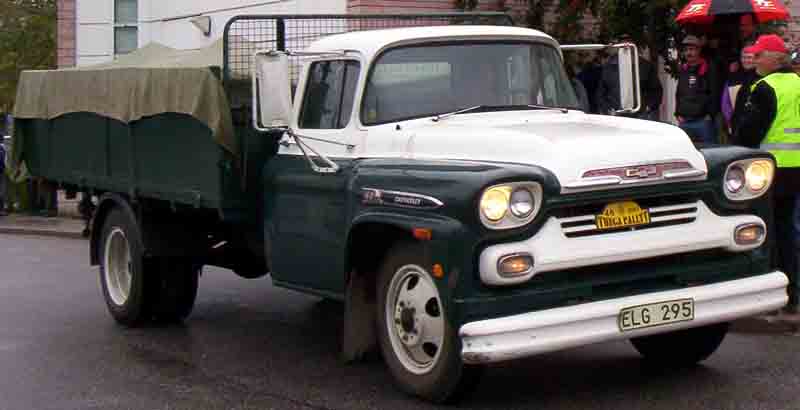
10. **Chevrolet Task Force (1955-1959)**The Chevrolet Task Force series, affectionately heralded as the “cool cats of the highway,” fundamentally redefined what a utility truck could be. Introduced in the mid-1950s, this series ushered in a new era of automotive design, bringing forward several groundbreaking innovations. Among these were the revolutionary wraparound windshield, which offered unprecedented visibility, and the option of powerful V8 engines, marrying brawn with cutting-edge engineering.
These trucks were meticulously conceived with a dual mandate: to perform demanding work with unwavering reliability, and to do so with a distinctive sense of style. This thoughtful blend appealed to an exceptionally broad market, captivating not only the traditional tradesmen and farmers but also a growing segment of buyers who desired a utilitarian vehicle that also projected a modern, sophisticated image. The Task Force proved that utility didn’t have to be visually bland.
Today, the enduring allure of Task Force trucks remains potent, with enthusiasts and collectors alike valuing them immensely for their robust performance and their undeniably classic looks. They are not mere relics of the past; many are still actively engaged in light-duty work, dutifully serving as dependable everyday haulers or as cherished vintage transport. These vehicles were, and continue to be, “rolling charisma machines,” perpetually ready “to tackle any task with a wink and a nod,” embodying a timeless spirit of capability and flair.
Car Model Information: 2024 Mazda CX-5 2.5 S Carbon Edition
Caption: 1956 Chevrolet Task Force (3100)
Name: Chevrolet Task Force Series
Manufacturer: Chevrolet
Aka: unbulleted list
Production: 1955–1959
Assembly: unbulleted list
Layout: Front-engine, rear-wheel-drive layout,rear-wheel drive
BodyStyle: pickup truck
Class: Pickup truck,commercial truck
Platform: General Motors A platform (RWD)
Related: Chevrolet Suburban#Fourth generation (1955)
Predecessor: Chevrolet Advance Design
Successor: Chevrolet C/K#First generation (1960–1966)
Engine: unbulleted list
Abbr: on
Transmission: unbulleted list
Wheelbase: unbulleted list
Categories: 1950s cars, Articles with short description, Cars introduced in 1955, Cars of Argentina, Cars of Brazil
Summary: The Chevrolet Task Force (or in some cases, Task-Force) is a light-duty (3100-short bed & 3200-long bed) and medium-duty (3600) truck series by Chevrolet introduced in 1955, its first major redesign since 1947. Known as the Blue Chip in the parallel GMC it had more modern design than the preceding Advance Design without sacrificing ruggedness or durability.
First available on March 25, 1955, these trucks were sold with various minor changes over the years from 1955 (2nd series) until 1957. Model years 1955 and 1956 had the “egg crate grill”. 1955 had the emblems below the lateral line of the front fender, whereas in 1956, the emblem was located above the lateral line and the hood emblem was a bit higher on the hood. In 1957, the grill changed to a more open design and the hood was given “spears” resembling the Bel Air.
In 1958 the series was renamed “Apache”, found on fender emblems, given a second set of headlights, and received other minor changes. The model continued with minor changes through 1959.
In 1960 the truck was replaced by the new C/K Series, but this retained the Apache name for some years.
Get more information about: Chevrolet Task Force
Buying a high-performing used car >>>
Brand: Chevrolet Model: Task Force
Price: $25,958 Mileage: 26,006 mi.
Read more about: Cruising in These 14 Classic Trucks? Here’s What Road Enthusiasts Secretly Think About You.
Ultimately, the enduring legacy of these 10 utility trucks isn’t just a testament to their individual engineering prowess; it’s a powerful narrative about resilience, thoughtful design, and the timeless appeal of a machine built right the first time. From the pioneering Ford F-Series that set new standards to the rugged Mack B Series that redefined heavy-duty performance, each of these vehicles has etched its indelible mark on history. They prove that true workhorse staples don’t just endure—they continue to inspire, reminding us that some designs are indeed built to conquer not just challenging terrains, but the relentless march of time itself. These are more than just old trucks; they are living legends, still rumbling down roads, across fields, and through construction sites, standing as proud monuments to a bygone era of uncompromising utility and steadfast reliability, a heritage that continues to resonate with undeniable mechanical excellence.


